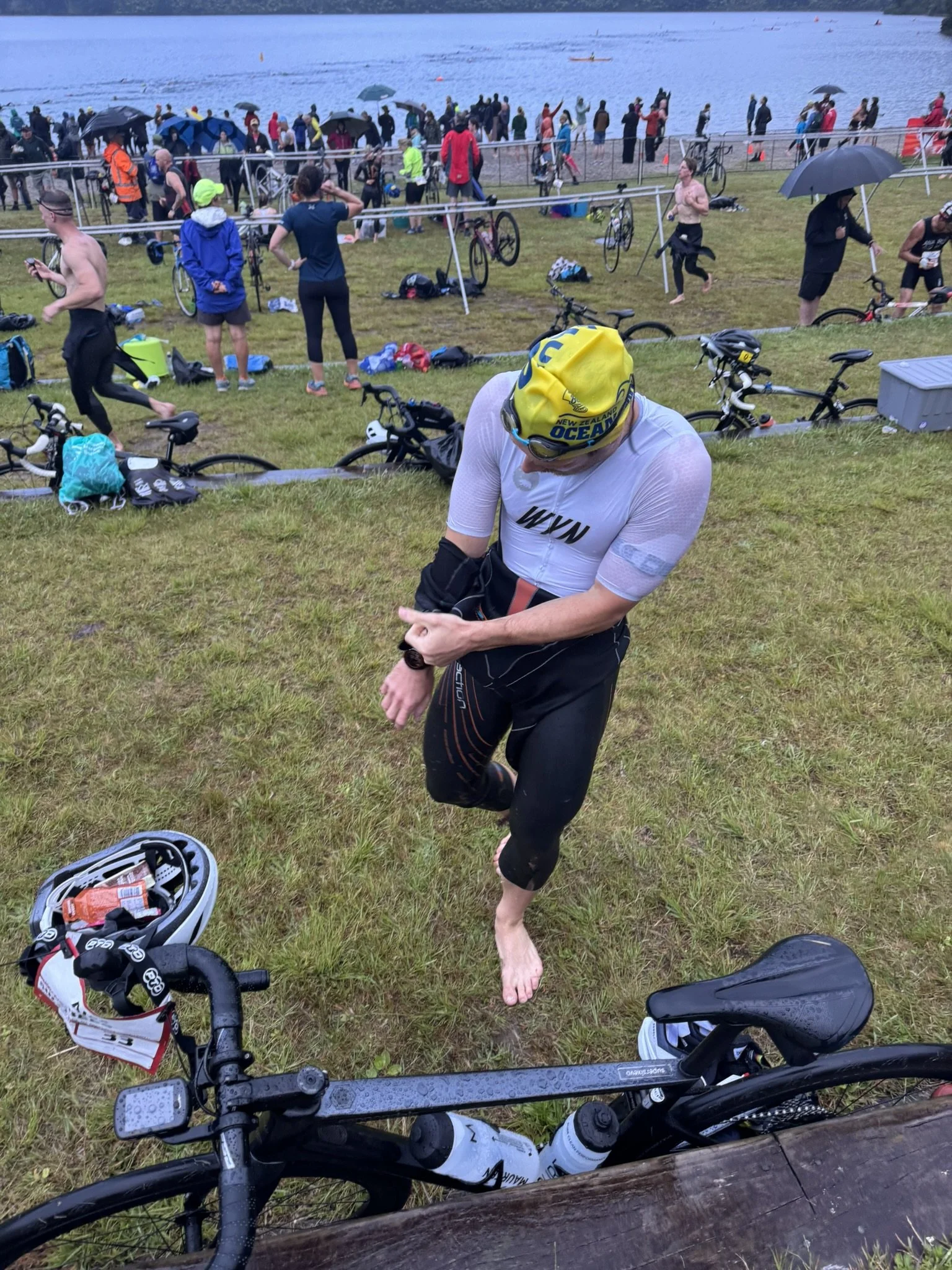Transition Tips That Will Save You Time and Stress
Because no one wants to panic over socks while wearing a wetsuit.
If you're new to triathlon, "transition" might sound like just the space between disciplines. But in reality, T1 (swim to bike) and T2 (bike to run) are races within the race and smart transitions can save you minutes and meltdowns.
At Hive Endurance, we see it all the time: athletes who train for months but lose precious time (and calm) because their transitions are chaotic. The good news? With a little planning and practice, transitions can become smooth, fast, and nearly automatic.
Let’s dive into some simple tips that can make a massive difference on race day.
Think of Transitions as Their Own Sport
You train swimming, biking, and running, why not practice transitioning between them?
Do brick workouts that simulate race day transitions.
Practice running after biking (T2) and quickly getting from wetsuit to bike (T1).
Try laying out your transition gear at home and rehearsing the sequence.
It feels silly, but a few dry runs will make you far more confident when it counts.
Layout is Everything
Think of your transition area like a workstation: clean, simple, and efficient.
Place gear in the order you’ll use it.
Keep it minimal. Don’t bring half your gear closet.
Use a small towel to define your space and keep things visible.
Roll socks (if using) and leave your shoes open and ready to step into.
Bonus tip: Know what you need and don’t copy what everyone else is doing.
Master the Wetsuit Exit
Getting stuck in your wetsuit can cost time (and dignity).
Use body glide or tri-friendly lubricant on ankles, wrists, and neck.
As soon as you exit the water, start peeling it down to your waist.
Step out carefully using your feet, or use the stomp-and-pull method.
Practice wetsuit removal at home or during open water sessions.
Pro move: If you’re racing in cooler weather, consider toe warmers in your bike shoes.
Don’t Overcomplicate the Bike Setup
You don’t need a full picnic on your top tube.
Pre-load bottles, gels, and any nutrition on your bike before the race.
Attach your number belt to your helmet or shoes so you won’t forget it.
Know how to unrack your bike quickly (and re-rack it for T2).
If you're comfortable, try the flying mount or at least mounting quickly just past the line. If not, no stress, just be steady and smooth.
Speed Up Your Run Start
T2 can feel messy with legs like jelly, brain fried from the bike.
Use elastic laces in your running shoes for a quick slip-on.
If you need a hat, sunnies, or nutrition, grab and go, you can sort it out once running.
Keep your number belt ready to spin to the front (if it’s moved).
Tip: Know the flow of transition, entry, exit, and your exact rack location.
The Best Gear is Calmness
Seriously. Being flustered can lose you more time than fumbling with socks.
Walk through transition during setup and count racks, find landmarks.
Know where swim in / bike out / run out are before the race starts.
On race morning, visualize your transition steps like muscle memory.
The most important gear you bring into transition? A clear head and a plan.
Final Thoughts
Transitions don’t have to be stressful or chaotic. With a little prep, some practice, and a focus on simplicity, you’ll save minutes and preserve energy for the parts of the race that really count.
At Hive Endurance, we coach athletes to treat transitions as part of their performance not just a break between legs. The smoother your transitions, the more confident you’ll feel all race long.


